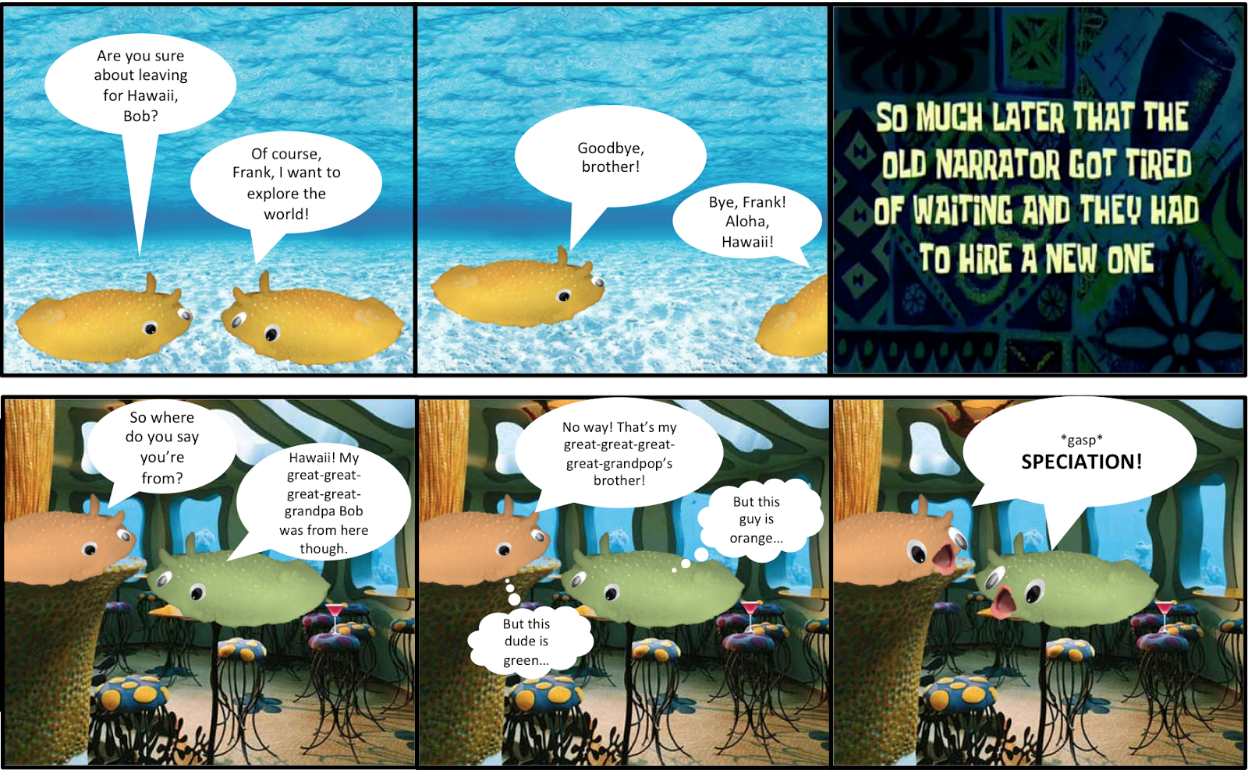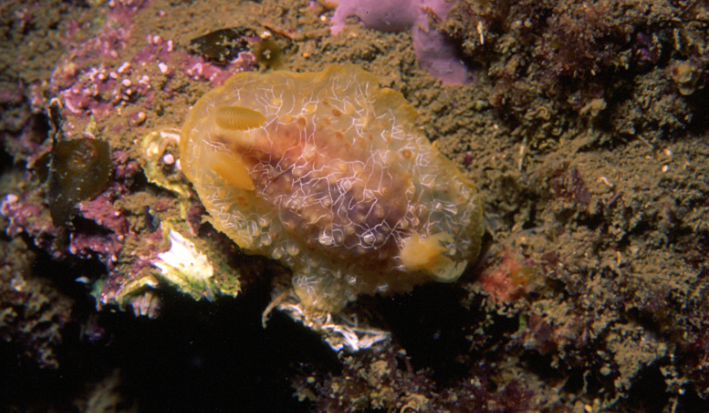Contributed by Ryan Martin, Rema Elmostafa, Valerie Linck, Andy Dong, Aneel Maini, Matt Morales
If it looks like a duck, and it quacks like a duck, well, it might not be a duck. This adage also applies to Doriopsilla areolata, a type of sea slug. In these cases we often want to use visible traits to identify species. However, many species look indistinguishably the same, while being distinct. Species are acted on by evolutionary processes independently of other populations. For a new species to arise, a population of individuals must become isolated, then mutations and natural selection will allow this populations to diverge from the population from which it is isolated. If the populations come back together and cannot interbreed or their offspring often have lower fitness, then they can likely be considered a different species.
Doriopsilla areolata, also known as one type of sea slug, is found in many areas of the world such as Spain, South Africa, and the Caribbean (Goodheart & Valdes, 2012). Scientists originally thought that there was only one species of this sea slug but after research they have discovered that many other species exist.
In recent history there have been major technological advances that allowed evolutionary biologists to identify differences in their DNA. For sea slugs and other members of the Doriopsilla genus, researchers found several mutations and variations in rRNA sequences that were present only in members of the same species (Cortes et al. 2009). Researchers were also able to analyze parts of digestive and reproductive anatomy at a microscopic level, finding high variability between species, making it unlikely that they would interbreed (Hoover et al 2015).
Doriopsilla areolata is a species of sea slug that can be found in the area ranging from Southwest Africa to Spain, with one of the broadest geographic ranges (Goodheart et al, 2012). Doriopsilla miniata is a colorful species of sea slugs that is found along the Pacific region of Japan (Hirose 2014). Another species studied is Doriopsilla gemela which is a species of slug found on the north eastern coast of the pacific, and their sister species, D. albopunctata is found on the coast of southern California (Hoover 2015).
Not all populations are separate species, however. For example, since Doriopsilla does not travel long distances, it has been proposed that geographic separation would reliably lead to speciation (Goodheart & Valdes, 2012). However, in the case of the three D. areolata subspecies near the Caribbean, Africa, and the Mediterranean there was no significant genetic difference. Because of this, it is believed that the populations are interbreeding to a degree, and that the three groups, each called a subspecies, are actually one according to biological and genetic evidence.
These sea slugs are the perfect example of how speciation is more complex than what we see.
For added fun, see our creative comic which summarizes speciation in sea slugs below!

In the course of time, species that were once related can evolve and diverge from one another. This is the concept of speciation. Although speciation is marked by changes in color in the cartoon above, this is not always the case and different species may actually end up looking quite similar.
For more information, see:
Goodheart, Jessica, and Ángel Valdés. “Re-evaluation of the Doriopsilla Areolata Bergh, 1880 (Mollusca: Opisthobranchia) Subspecies Complex in the Eastern Atlantic Ocean and Its Relationship to South African Doriopsilla Miniata (Alder & Hancock, 1864) Based on Molecular Data.” Mar Biodiv Marine Biodiversity 43.2 (2012): 113-20. Web.
Hirose, Mamiko, Euichi Hirose, and Masato Kiyomoto. “Identification of Five Species of Dendrodoris (Mollusca: Nudibranchia) from Japan, Using DNA Barcode and Larval Characters.” Mar Biodiv Marine Biodiversity(2014).
Hoover, Craig, Tabitha Lindsay, Jeffrey H. R. Goddard, and Ángel Valdés. “Seeing Double: Pseudocryptic Diversity in the Doriopsilla Albopunctata-Doriopsilla Gemela Species Complex of the North-eastern Pacific.” Zoologica Scripta Zool Scr 44.6 (2015): 612-31.
Vonlanthen, P., D. Bittner, A. G. Hudson, K. A. Young, R. Müller, B. Lundsgaard-Hansen, D. Roy, S. Di Piazza, C. R. Largiader, and O. Seehausen. “Eutrophication Causes Speciation Reversal in Whitefish Adaptive Radiations.” Nature 482.7385 (2012): 357-62.
Cortés, Jorge, and Ingo S. Wehrtmann. “Diversity of Marine Habitats of the Caribbean and Pacific of Costa Rica.” Marine Biodiversity of Costa Rica, Central America (2009): 1-45. Web.
Bertsch, Hans. “Nudibranch feeding biogeography: ecological network analysis of inter-and intra-provincial variations.” Thalassas 27.2 (2011): 155-168.

